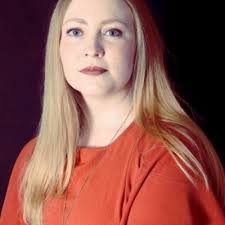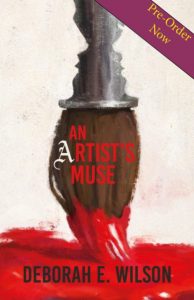Monsters
 Monsters. We have always been fascinated by them: either to gather macabre evidence to prove their existence, or otherwise to emphatically disprove it. They can be fantastical, supernatural, or far too close to home – monsters who hide in plain sight, who remind us that humanity can often be a thinly-veiled concept.
Monsters. We have always been fascinated by them: either to gather macabre evidence to prove their existence, or otherwise to emphatically disprove it. They can be fantastical, supernatural, or far too close to home – monsters who hide in plain sight, who remind us that humanity can often be a thinly-veiled concept.
As a sixth-form leaver, about to enrol as an English student at the University of Lincoln, it was monsters that had captured my literary imagination. I was still yet to read such a wealth of writing styles and eras, but from the limited selection I’d chosen in my teens, I had always been drawn to the Gothic: Dracula had been the first novel I’d devoured in a matter of days. Frankenstein and Wuthering Heights were also favourites.
At university I was darkly fascinated by The Wasp Factory, and read Angela Carter and Thomas Harris’ Hannibal series during breaks from study. My dissertation attempted to unravel the reasons why 21st Century culture glamorises serial killers, a trend which continues even in the decade since I graduated.
Knowing the literary journey I have taken goes a fair way towards explaining what led me to write my debut novel, An Artist’s Muse. It was in the long, empty summer that preceded the start of my English degree that I first decided to sit down and write a book. It was something I’d longed to do, and tried to do, since childhood. Of course, I started with monsters.
The 19th Century had birthed a wealth of literary monsters. My teenage favourites, Dracula and Frankenstein’s Monster, were only the beginning. Mr Hyde, Peter Quint, Cathy’s Ghost – and of course, Heathcliff himself, and whoever was lurking in Charlotte Perkins Gilman’s Yellow Wallpaper, to name just a few. Monsters and the monstrous – and always so closely linked to the inexplicable mysteries that dwell inside us.
I decided then that I had to reinvent ‘the monster’ – add my own thread to the tangled weave. It would be easier to do so, I believed, in a period piece – another Victorian Gothic novel which would hopefully slip in alongside its contemporaries comfortably, but with the benefit of being written in the present, with a wealth of hindsight to help me along.
Unexpectedly, however, my search for a new ‘monster’ led me much further back in time. After all, many Gothic monsters had their roots in medieval and ancient folklore. So why not travel back further? That was when I decided on Ancient Greek mythology, and began to research the Nine Muses.
This was definitely the catalyst for my story – but I won’t say more, as that would give far too much plot away!
I will instead introduce you to my protagonist, Clara Breslin, who works for her brother in his Apothecary in London (Apothecaries have also been a long-standing fascination – I’ve planned at least 3 stories with an Apothecary as the principal setting). Clara doesn’t sit particularly well within Victorian London society – mostly because she isn’t interested in being married off, and because she wants to make a career for herself as an artist. Just imagine…such a radical…
When readers are first introduced to Clara, she is spending most of her time painting portraits of strangers who walk by her window. The story truly starts to unfold when one such stranger catches her attention and just won’t let go – the actor, Matthias Tarasso.
Matthias becomes her muse – but he will hold sway over her life in ways beyond all rationality and reason…
The novel wends its way through poisonings, arrests, a criminal trial and more. But in the end, we are left with the question – do we believe the tragic events of the novel to be the insidious work of a ‘monster’? Or can the characters’ fears of the supernatural be explained away by science and psychology? It is a debate of the ages, and one that continues to this day.
That is why I wrote this novel – I feel it can still have a modern relevance, despite its period setting. I also enjoyed the opportunity to write a 19th Century female narrative that was unconstrained by being written in the 21st Century. Clara regularly comments on her society’s restrictions, and actively combats them, in ways that doubtless many women of the era did – we were just less likely to hear about them!
And hopefully readers will find that, by the end of the novel, the female narrative ends with potential, rather than suppression. I have a continuation of the story germinating in my brain as I type, and hope to begin writing that once I have finished my current WIP (this time set in the 18th Century, with a focus on the occult).
An Artist’s Muse is available to pre-order from Victorina Press and will be officially launched in December. Advance proofs are available for potential reviewers – your feedback and any dialogue on the subject matter of the Gothic, monsters and reimagined contemporary female narratives are most welcome.
—
Deborah E Wilson is a writer based in Nottinghamshire.
Specialising in fiction that ‘haunts’ – be it her debut novel, ‘An Artist’s Muse’: a Victorian Gothic Mystery, or her upcoming projects, including an insight into a Regency-era murder…
Also a writer of short stories and poetry.
She has a BA (Hons) in English from the University of Lincoln.
Website: deborahewilson.wixsite.com/authorshaunt
Twitter: @DEWauthorshaunt
Facebook: An Artist’s Muse/ Deborah E Wilson – Author
 Nineteenth-century London. Clara Breslin is earning her keep in her brother’s apothecary. She isn’t interested in married life and spends her free time painting portraits of strangers who walk by her window. Her study is infuriatingly unexceptional – until she meets Matthias Tarasso, an actor.
Nineteenth-century London. Clara Breslin is earning her keep in her brother’s apothecary. She isn’t interested in married life and spends her free time painting portraits of strangers who walk by her window. Her study is infuriatingly unexceptional – until she meets Matthias Tarasso, an actor.
Watching him perform, she finds herself captivated. Matthias becomes a dominant influence over her and his presence helps Clara create true masterpieces.
But an unseen evil is feeding on the tragedy that blights London’s streets and dwellings.
Clara suffers from horrific nightmares involving disease and fatality when customers of the apothecary grow ill from its remedies. After a suspicious death, Matthias becomes the main suspect. But who is really causing death, fatality and tragedy? Is it Matthias? Or Clara? Perhaps the truth behind the crime is far more insidious and cruel than anyone could have imagined…
Category: Contemporary Women Writers, How To and Tips
























Comments (1)
Trackback URL | Comments RSS Feed
Sites That Link to this Post